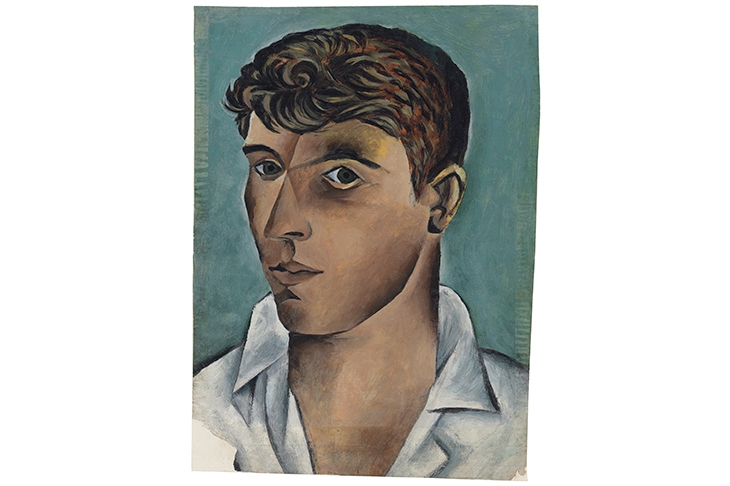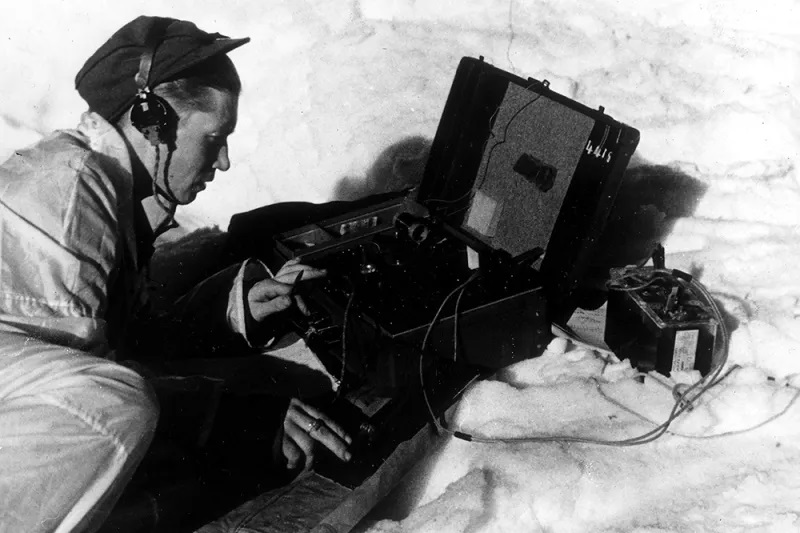Charm is a weasel word; it can evoke the superficial and insincere, and engender suspicion and mistrust. But charm in its most authentic sense was surely the defining quality of the painter John Craxton, and it flavors this lively and richly colored account of his life. Ian Collins only met the elderly Craxton — by now sporting the mustaches, shepherd’s stick and general demeanor of a Cretan chieftain — in the last decade of his life (he lived to 88), and was immediately seduced by his joie de vivre and his fund of recondite knowledge, stories and jokes, and drawn into Craxton’s charmed circle. He became the artist’s Boswell, taping hours of interviews, working with him towards a monograph on his art and gaining his tacit agreement to a strictly posthumous biography.
And what a high-octane ride it turns out to be. Few painters of the past century can have packed so much hedonism around the boundaries of their art, or adopted another country and culture with the fervor that Craxton adopted Greece. To a natural sensualist, its brilliant light and wild, craggy landscape acted like a magnet away from the doldrums of post-war London and the dour climate particularly enervating to a young man with tuberculosis and a passion to paint. The son of the musician Harold Craxton and a family as baggy and bohemian as they come, John got off to a flying start, and was always encouraged to strike out and explore the world for himself. Along the way he discovered Samuel Palmer, William Blake and his own homosexuality, and developed a genius for making friends and connections.
Through Peter Watson, the cultural patron and sponsor of Horizon, he fell in happily with the demi-monde of Soho and Fitzrovia and soon met Lucian Freud, who became his boon companion and ultimate nemesis. Their renegade talent and streak of delinquency fueled a high-voltage friendship, played out over many years all the way from London to Greece: to see their work from the 1940s is easily to mistake one artist for the other. Collins documents a closer bond than does Freud’s biographer William Feaver, for, just as the two painters moved in opposing aesthetic directions, they eventually fell out dramatically over attributions and disposals of early work, calling for lawyers at dawn. Freud embarked on what even his friends called a vendetta, and Craxton— for whom loyalty between friends was paramount — felt bitterly betrayed. When gravely ill towards the end of his life and asked by a doctor what his priorities were, he replied: ‘It’s essential that I outlive Lucian Freud.’ Sadly, he didn’t make it.
That aside, Craxton’s life was buoyed up by an astonishing range of friendships, deep and lasting and evidently delightful for all involved — most notably Paddy and Joan Leigh Fermor and the Greek painter Niko Ghika, whose villa on Hydra became a haven for all before they built their own bases in Crete and Kardamyli. Surprisingly, given Craxton’s normal preferences, a serious love affair with Margot Fonteyn grew out of their collaboration on Frederick Ashton’s production of Daphnis et Chloé. Craxton, strikingly handsome himself, was bowled over by her grace and beauty.
He moved effortlessly through Europe, gleefully mixing high life with low: he would cut a swathe through the local sailors, shepherds, fishermen and bikers, yet find the time and stamina to paint or help friends out with their projects between wild carousing and one-night stands. Staying with the Devonshires at Chatsworth, he quipped: ‘The house is almost too much even for me and I took fright and turned tail and made for Bakewell to have a tart & cuppa with the proletariat.’ Some critics felt that he was having too much fun to be a serious painter, but though his idiomatic mature style — indebted to the Byzantine tradition and icon-painting — arguably became formulaic, it reflected his unwavering ambition to translate the Greek experience into paint on canvas.
If this account is undoubtedly written with the warmth and empathy of friendship, it doesn’t shy away from the shadows. Craxton was often skint, relying on endless handouts and the hospitality of friends — though many protested that he repaid them in spades. Conviviality often took precedence over painting, to the detriment of his career, and from his base in Crete he was increasingly aware of becoming an artistic outsider. Though he was normally apolitical, his decade-long banishment from Greece during the Colonels’ rule was a period of wandering and disorientation. Yet running though the highs and lows like a seam of gold is his distinctive body of work, beautifully illustrated, and the indomitable, teasing, sometimes rebarbative voice that charmed so many, always building up to the next joke, never taking itself too seriously, and sweeping all but the most cynical along with it.
This article was originally published in The Spectator’s UK magazine. Subscribe to the World edition here.

























